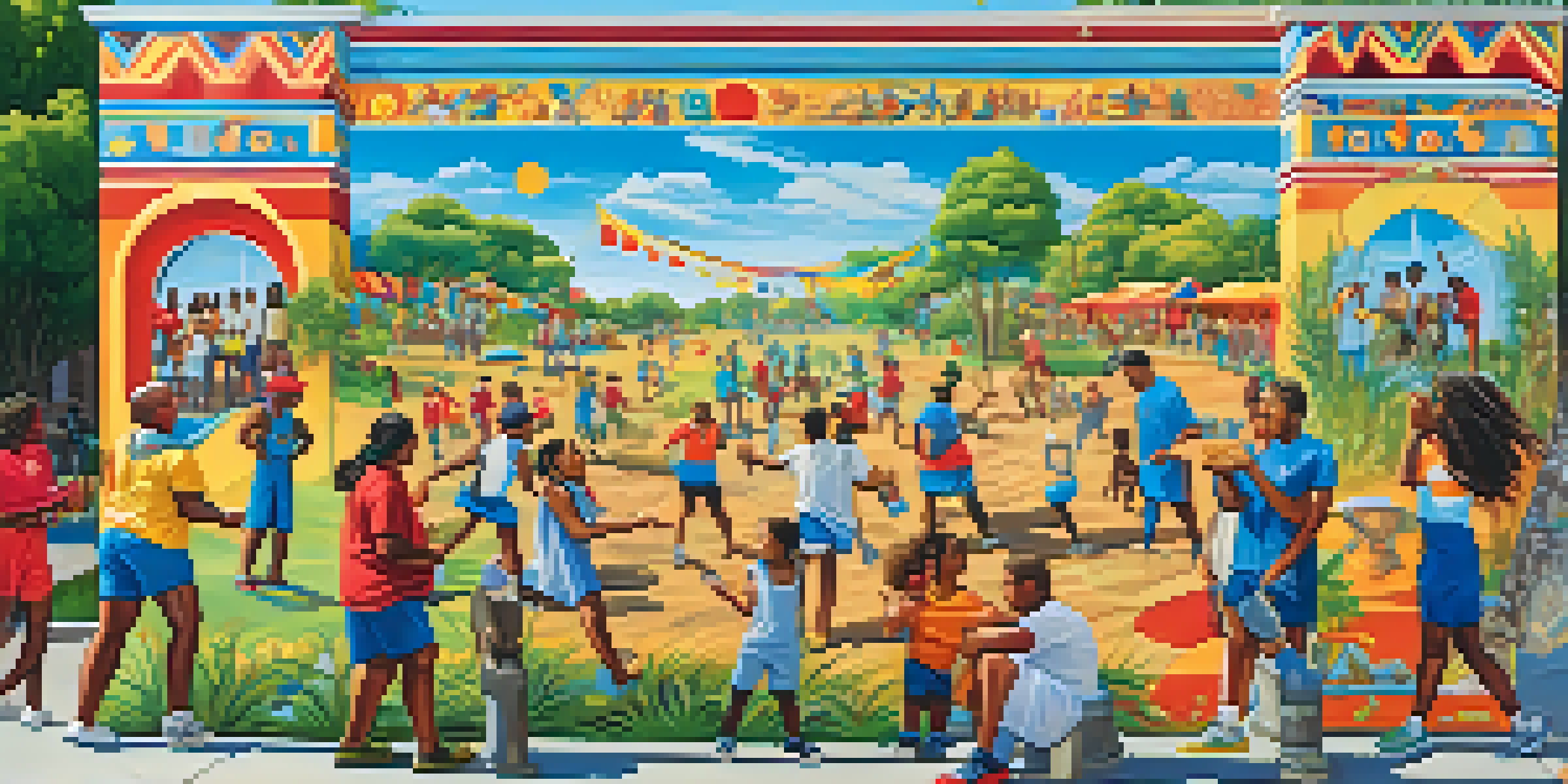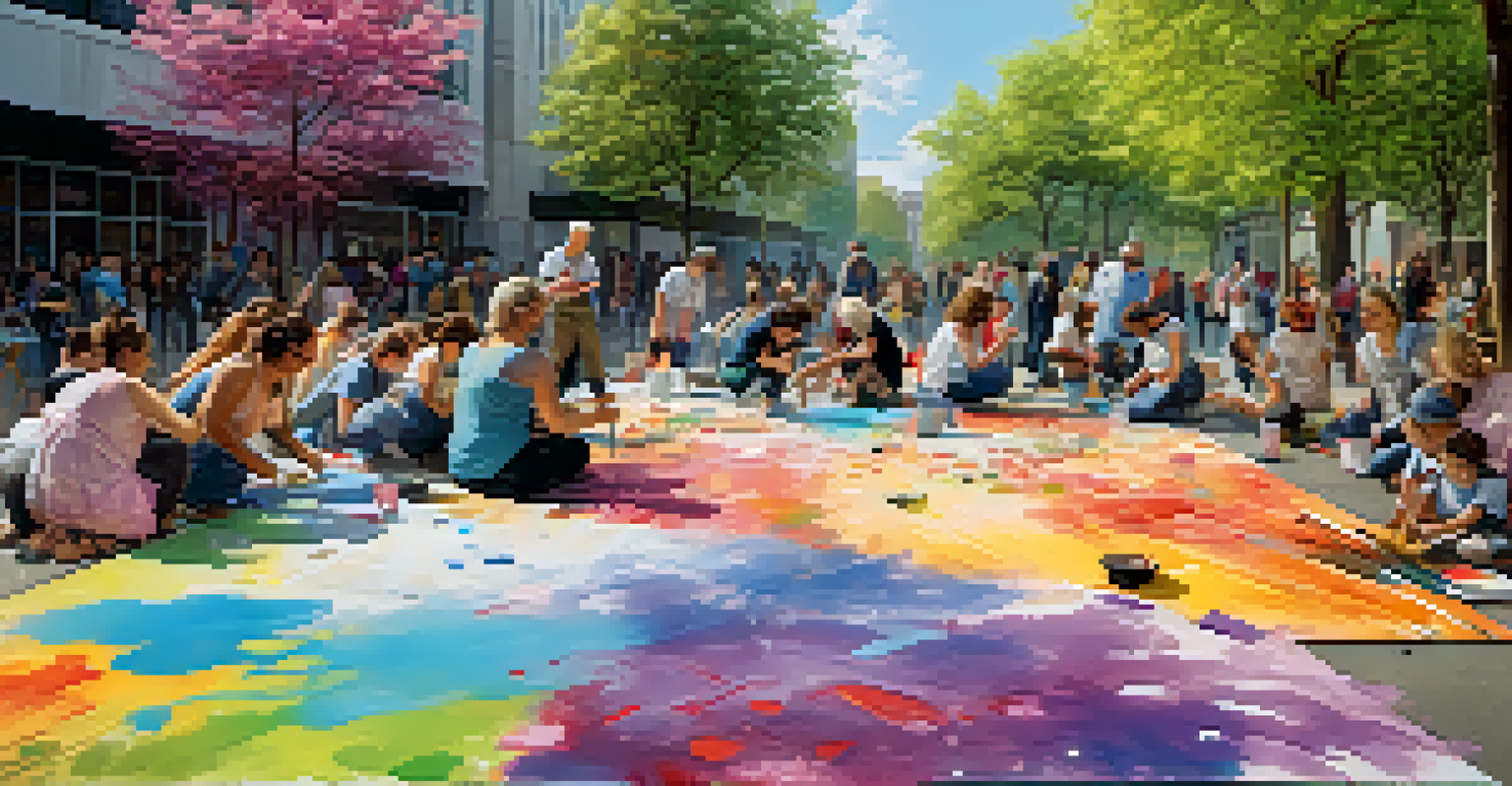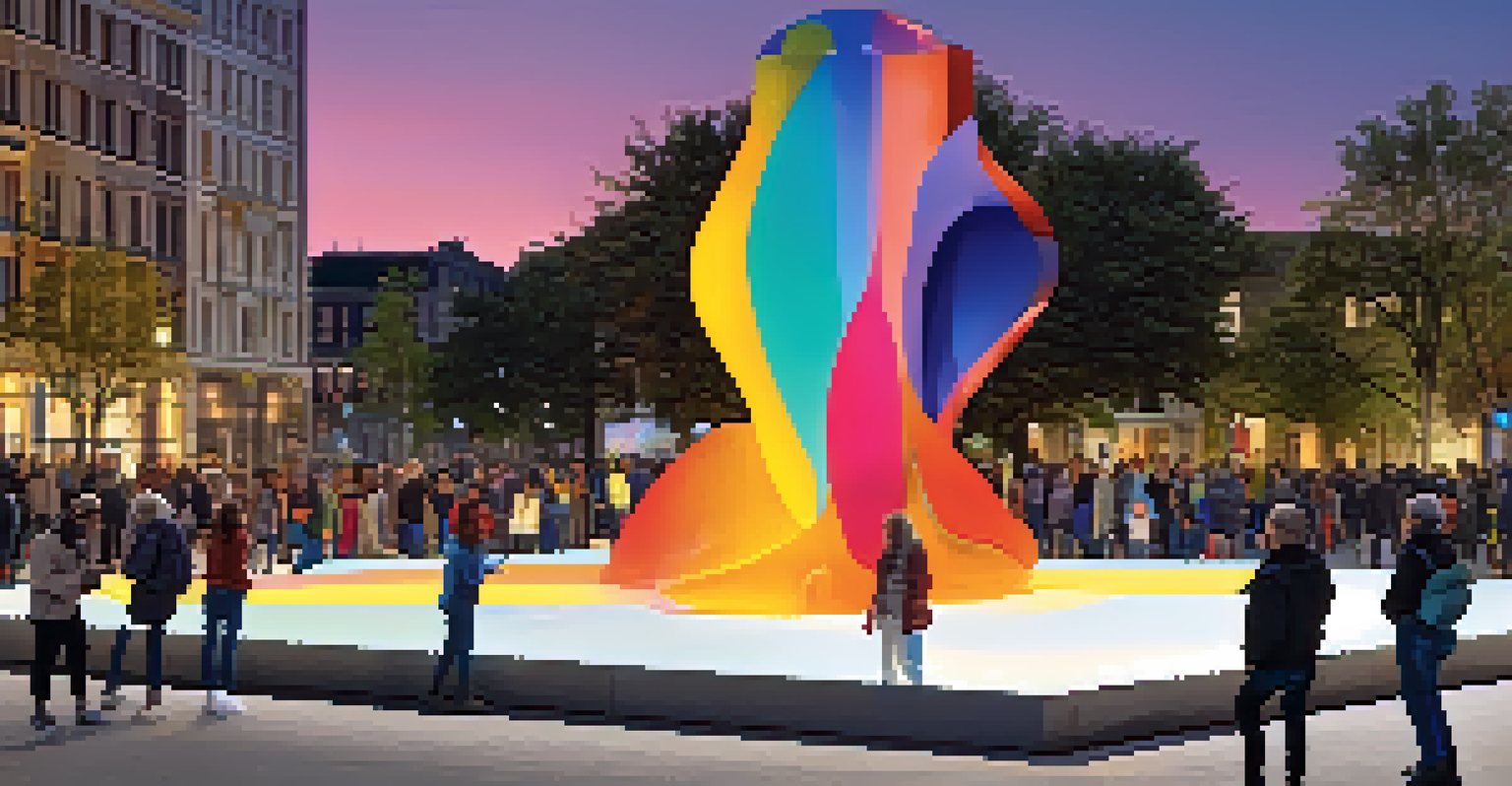Community Engagement in Public Art: A Collaborative Approach

Understanding Public Art and Its Importance
Public art refers to artworks created for public spaces, aiming to engage the community and enrich the environment. These pieces can take many forms, from murals to sculptures, and often reflect the culture and values of the local area. Their presence fosters a sense of place and identity, making communities feel more connected.
Public art is a way to communicate with the community, to engage them in a dialogue about the world around them.
Moreover, public art serves as a platform for expression, allowing artists to voice social issues and celebrate diversity. It invites people to interact with their surroundings in a meaningful way, transforming everyday spaces into vibrant galleries. In essence, public art has the power to inspire conversation and reflection among viewers.
Understanding the role of public art is crucial for fostering community engagement. When residents see their stories and experiences represented, it cultivates pride and ownership over shared spaces. This connection can lead to a more cohesive community, where art acts as a bridge between different cultures and perspectives.
The Role of Community in Public Art Projects
Community involvement is the backbone of successful public art projects. When artists collaborate with local residents, the resulting artwork often resonates more deeply and reflects the community's unique identity. This collaborative approach ensures that the art is not just a visual addition but a meaningful part of the community's narrative.

Involving community members in the creative process can take many forms, from workshops to surveys that gather input and ideas. These interactions foster a sense of ownership and pride, as residents see their contributions reflected in the final piece. Ultimately, this participatory approach nurtures relationships among residents and artists alike.
Public Art Enhances Community Identity
Public art fosters a sense of place and identity, making communities feel more connected through shared cultural expressions.
Furthermore, community-led initiatives can help break down barriers and encourage inclusivity. When diverse voices are represented in public art, it promotes understanding and appreciation across different demographics, making everyone feel valued and heard. This inclusivity enhances the overall impact of the art and strengthens community bonds.
Collaborative Approaches to Public Art Creation
Collaborative approaches in public art creation emphasize teamwork between artists, community members, and local organizations. These collaborations often lead to innovative ideas that may not have emerged in a more traditional artist-led process. By pooling resources and perspectives, communities can create art that truly reflects their collective vision.
Art is the most beautiful of all lies; it is a way to express the truth of human experience.
For instance, artists might work alongside schools, non-profits, or local businesses to develop projects that engage a wide audience. This can include educational programs that teach art skills or events that celebrate the unveiling of new pieces. Such collaborations not only enhance the project's reach but also enrich the community's cultural landscape.
Moreover, these partnerships can help secure funding and resources necessary for public art projects. By showcasing the community's enthusiasm and commitment, they become more attractive to potential sponsors and grants. This collaborative spirit ultimately leads to more sustainable and impactful art initiatives.
Benefits of Community Engagement in Public Art
Engaging the community in public art projects brings numerous benefits, both tangible and intangible. One significant advantage is the enhancement of social cohesion, as collaborative art fosters connections among residents. When people work together toward a common goal, it naturally strengthens relationships and builds trust within the community.
Additionally, community engagement often leads to increased foot traffic in public spaces, benefiting local businesses. When residents and visitors are drawn to vibrant art installations, they are more likely to explore the area and support nearby shops and restaurants. This economic boost can be a vital part of revitalizing neighborhoods.
Community Involvement is Key
Successful public art projects rely on community engagement, ensuring that the artwork reflects the unique identity and voices of local residents.
On a personal level, participating in public art initiatives can empower individuals. Community members gain a sense of agency as they contribute their ideas and skills, fostering self-esteem and pride. This empowerment can inspire lifelong engagement in the arts, creating a culture of creativity that benefits future generations.
Challenges in Community Engagement for Public Art
While community engagement in public art has many benefits, it is not without its challenges. One of the primary hurdles is ensuring that all voices are heard, especially those from marginalized communities. Often, traditional power structures can overshadow these voices, leading to art that does not fully represent the community's diversity.
Additionally, logistical issues can arise, such as funding constraints or lack of resources. Many communities may struggle to find the necessary support for public art projects, which can hinder meaningful engagement. It’s essential to identify and address these challenges early on to create a more inclusive process.
Lastly, managing differing opinions on art can be tricky. Public art is subjective, and not everyone will agree on what should be created or how it should look. Facilitating open dialogue and encouraging compromise can help bridge these divides, ensuring that the final artwork reflects a broader consensus.
Case Studies of Successful Community Engagement
Several case studies highlight the power of community engagement in public art. For example, the 'Chicago Public Art Program' has successfully involved residents in various projects, from murals to public performances. By prioritizing community input, the city has seen a significant increase in public art that resonates with its diverse population.
Another illustrative case is the 'Mural Arts Philadelphia' initiative, which focuses on transforming neighborhoods through collaborative mural projects. By engaging local residents, businesses, and artists, Philadelphia has created a vast network of murals that tell the stories of its communities. This has not only beautified the city but also fostered a sense of pride among residents.
Collaborative Art Drives Social Change
Collaborative approaches in public art not only create innovative projects but also strengthen community bonds and promote inclusivity.
These examples demonstrate that when community members are involved, public art can become a powerful tool for social change and cohesion. Such successful projects can serve as models for other communities looking to embark on similar initiatives, emphasizing the importance of collaboration and inclusivity.
The Future of Community Engagement in Public Art
As we look to the future, the potential for community engagement in public art is vast. With advancements in technology, artists and communities can connect in unprecedented ways, utilizing social media and digital platforms to gather input and share ideas. This can lead to more dynamic and responsive art that reflects the community's evolving identity.
Moreover, as communities become increasingly aware of social issues, there is a growing demand for art that addresses these challenges. Public art can serve as a catalyst for discussions around equity, sustainability, and justice, encouraging communities to come together and advocate for change. The role of art in social movements is becoming more prominent, highlighting its significance in shaping public discourse.

Ultimately, the future of community engagement in public art looks bright. By fostering collaborations that are inclusive and reflective of diverse voices, communities can create meaningful art that not only beautifies spaces but also strengthens bonds and inspires action. The journey of public art is a collaborative one, and together, communities can shape a vibrant cultural landscape.